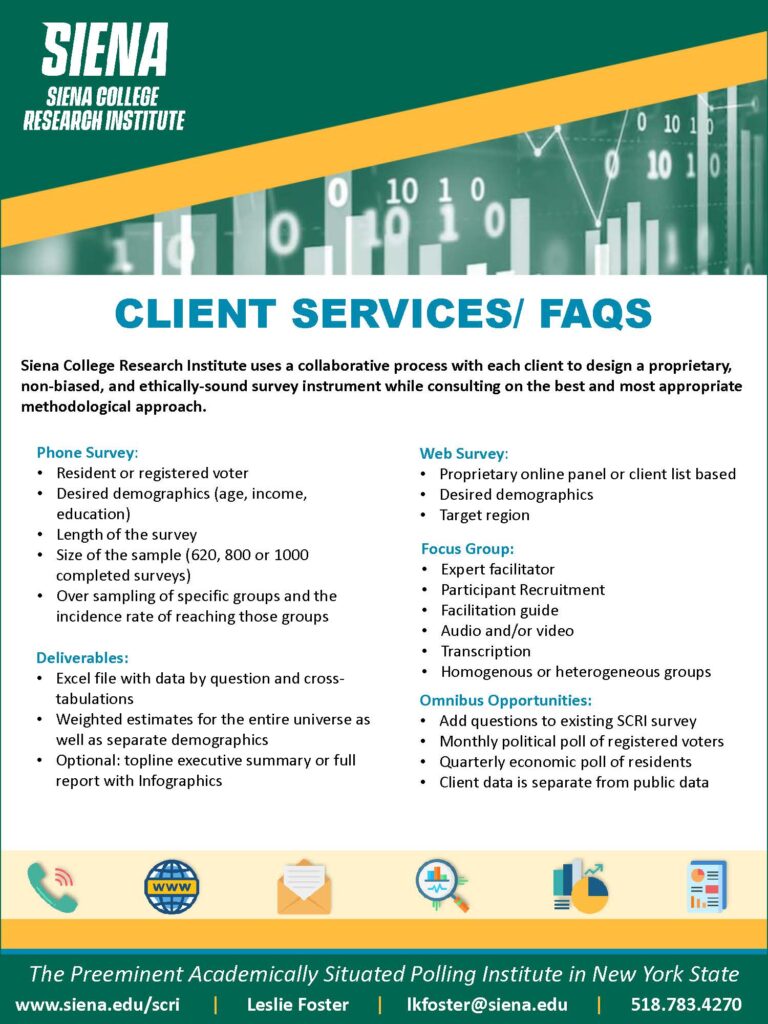An Overview of Computer-Assisted Telephone Interviewing and Telephone Sample
SCRI has developed a strong reputation for meeting tight deadlines for Computer-Assisted Telephone Interviewing (CATI) data collection and for providing high quality results within a competitive price framework. Surveys can be conducted with either the general population, registered voters, likely voters or a client-defined population.
SCRI uses Voxco Computer-Assisted Telephone Interviewing (CATI) software on a local area network. SCRI maintains 48 interviewing stations on campus at Siena College. Our system can accommodate a number of questionnaire item designs including multiple response, randomized lists, open-ended and conditional responses.
Typically, SCRI utilizes one of three different sampling strategies for our CATI surveys. Review some of the available sampling strategies below.
Random Digit Dialing (RDD) generates random samples of telephone numbers for public opinion surveys. Random digit dialing has the advantage that it includes unlisted numbers that would be missed if the numbers were selected from a phone book. RDD sampling helps reduce non-coverage bias because all telephone households have an equal and representative chance of being interviewed. RDD samples are completely representative of the sampling universe, or frame, and can be “defended” from a methodological standpoint. RDD samples are less expensive than Listed but they are less efficient.
Listed samples can be more tightly targeted than RDD samples due to the amount of detailed information available (ex. estimated income, gender, age, ethnicity, or number of children for any given household). Because there is a greater chance of getting exactly who we are looking for, they can be more efficient but the sample itself costs more.
Clients provide a list of potential respondents. For example, panel and tracking surveys, customer satisfaction surveys, patient and client follow-up questionnaires.
SCRI recommends including a cell phone sample along with the standard landline sample. On most SCRI surveys, 25-50% of all completed surveys come from cell phones.

